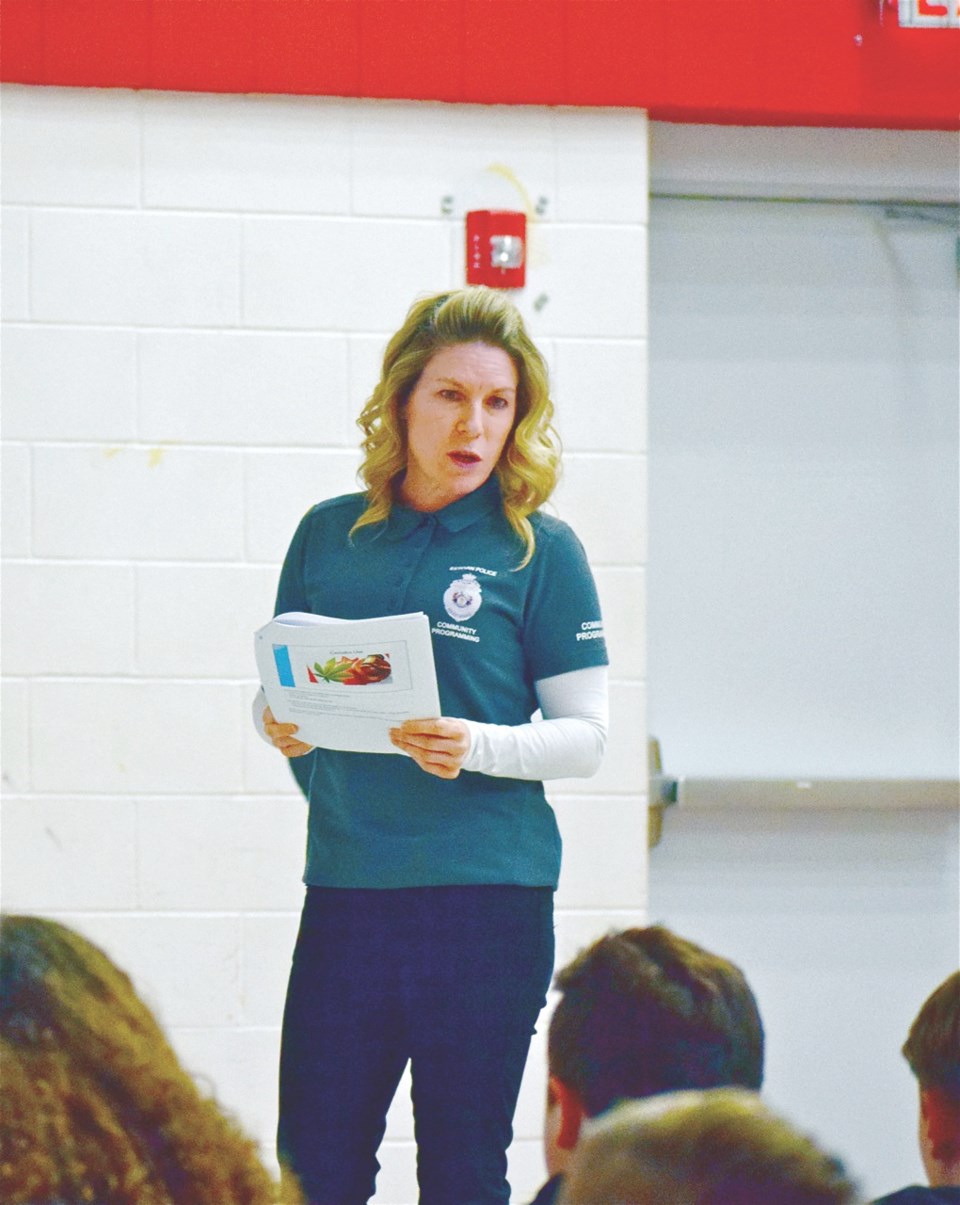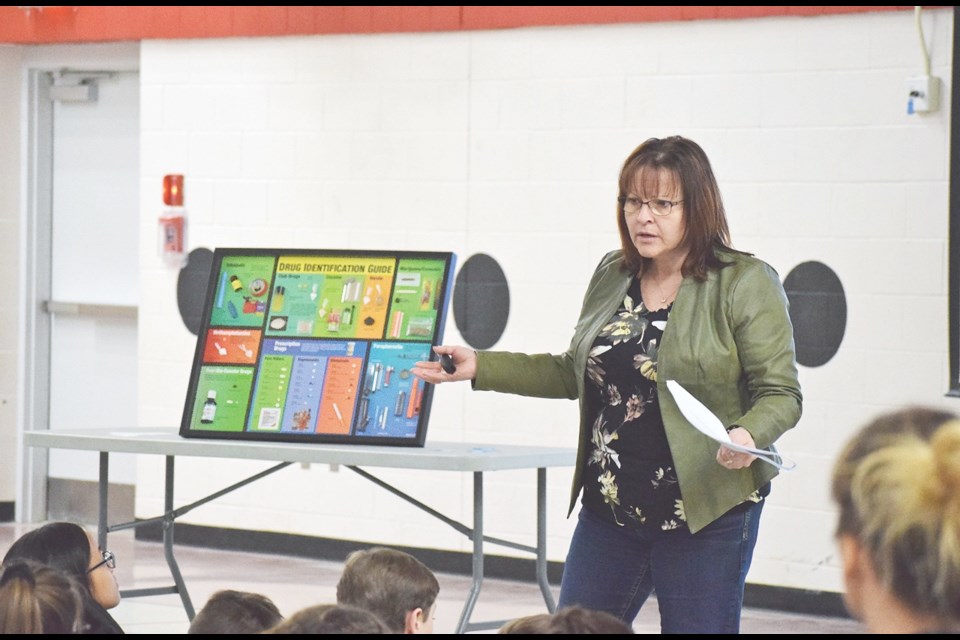“Do I really understand what I’m getting into?” That’s the question Estevan law enforcement, educational and social agencies encourage school students to think about when it comes to drugs.
And to help to battle the problem in the community the group started delivering drug awareness presentations to all schools of Holy Family Roman Catholic Separate School Division and South East Cornerstone Public School Division.
Working together, such organizations as the Estevan Police Service (EPS), RCMP, two school division boards, addiction and probation services and others try to make sure that kids have correct and current information about drug regulations and activity.
The first two presentations were delivered to St. Mary’s School and Sacred Heart School/École Sacré Couer last week.
Curriculum co-ordinator with Holy Family Lynn Colquhoun talked to Grade 7 and 8 students at Sacred Heart about why teenagers tend to make more risky decisions and about effects drugs and alcohol have on their brain.
“Your brain is still developing… (it) will continue to grow until the age of 25… As a result of this development, physical growth, you are going to experience some things as a teenager that I try not to experience as an adult, … but you won’t be able to control it… Such as difficulty holding back or controlling emotions... A preference for high-excitement and low-effort activities… Poor planning and judgment, rarely thinking of negative consequences … More risky, impulsive behaviors, including experimenting with drugs and alcohol, texting while driving, being a passenger with a high driver and engaging in unsafe sex,” said Colquhoun.
Community programming officer Monica Rae brought up some facts and explained the laws that regulate consumption of tobacco, alcohol, cannabis and other drugs, as well as driving under the influence of alcohol and narcotics.

“Just because a drug is legal does not make it safe… It is illegal for children and youth to use and possess these substances… A minor in possession of and/or consuming alcohol or cannabis can be fined $360. The legal age to purchase tobacco, alcohol and cannabis in Saskatchewan: for tobacco, it’s 18, for alcohol, it’s 19 and for cannabis, it’s 19. Although these products are legal to purchase and consume at those ages, it is still illegal always to drink and drive and to drive high,” said Rae.
Even though Estevan Police Service K-9 Max wasn’t present at this particular presentation Rae outlined that the police has a trained dog which specialize in drug detection as well as other means of finding illegal substances.
The presentation covered legal, social and health consequences of using even legalized substances and was aimed at helping youths to make informed and responsible choices in the future.
“Your teachers often tell you, ‘It’s on you. It’s your decision. What do you want to do? You got power and control, choose.’ … And consequences are always the result of your choice,” said Colquhoun.
Introducing EPS sergeant Craig Bird, Colquhoun pointed out that the police would sooner spend days educating about drugs than resolving drug and alcohol-related crimes out in the community.
Bird, in his speech, told students that the police are aware that a lot of teens try smoking and drinking, experiment with drugs and get involved in dangerous activities, but he insisted that even when making poor choices and finding themselves in trouble youths always should ask for help instead of hiding. He also encouraged them to evaluate some friends around them.
“You are going to go out partying with friends and they are going to pressure you into drinking, so you can be cool and be hanging out with the right crowd. And I’ll tell you if those are the types of friends that you are hanging out with that are forcing you to do things that you don’t want to do … you need to start thinking about what kind of friends you are hanging out with. Because friends don’t do that to friends,” said Bird.
Rae used some statistics to illustrate the situation with drugs and alcohol in the country. She recalled that Canadians between 14-25 years old have one of the highest rates of cannabis use in the world; motor vehicle crashes are the leading cause of death among 16-25 year-olds, and alcohol and/or drug impairment is a factor in 55 per cent of those crashes.
However, a story of a man who unintentionally got overdosed with liquid methadone, secretly mixed into his drink by drug addicts, seemed to affect students much stronger than numbers.
“They sat and watched him die. Not one person called for help, not one person tried to help him, they watched him die right behind them on the couch. And once he died they proceeded to take his leather jacket… wedding ring and wallet and pawn it off, because that’s how messed up their heads they were,” said Rae.
Following the story, Sacred Heart School cousellor Shannon Culy talked about the effects of addictions and explained what organizations there are and who can be a resource for students when they have questions or find themselves in trouble.
Similar presentations will be delivered to Grades 4-11 of all schools in Estevan in the near future.
Talking about drug-related issues in schools, police Chief Paul Ladouceur noted that they always closely monitor the drug situation in all Estevan schools. However, if parents or students have concerns about drugs being used or distributed in school, they should contact the police. There is always an option to remain anonymous.



